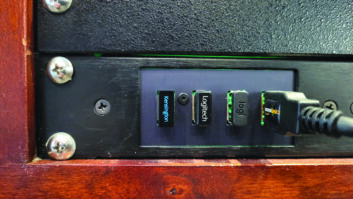DALLAS�AT&T continues to test the propagation characteristics of millimeter wavelength RF signals even as it begins rolling out �5G� services in select places around the country.�

In arecent articlein rcrwireless.com, Hank Kafka, VP of access architecture and analytics for AT&T, was interviewed about his team�s work on achieving the �last mile� connection to end users. He commented that the last mile is actually more like �200 feet.� The evolution from 2G to 3G to 4G revolved largely around working in� sub-6 GHz bands and adding new features to improve efficiency and speed�but 5G, Kafka said, is a �much larger generational leap because it involves both new technology and new bands at millimeter wave frequencies.�
AT&T has studied a number of potential bands in the lab, from sub-6 GHz all the way up to 73 GHz, according to the same article.
AT&T also wants to better understand how long-term seasonal changes, such as foliage cover, would impact 5G networks, so at one of its campuses the company built a long-term outdoor test system with a number of transmitters and receivers�some within line-of-sight of one another and others behind trees�in order to gain better insight into how weather events and seasonal changes affected millimeter wave propagation.� Those tests have yielded information about the effect of rain and weather as well as insights about propagation in relation to different types of trees, all of which will be important as 5G plans evolve.







